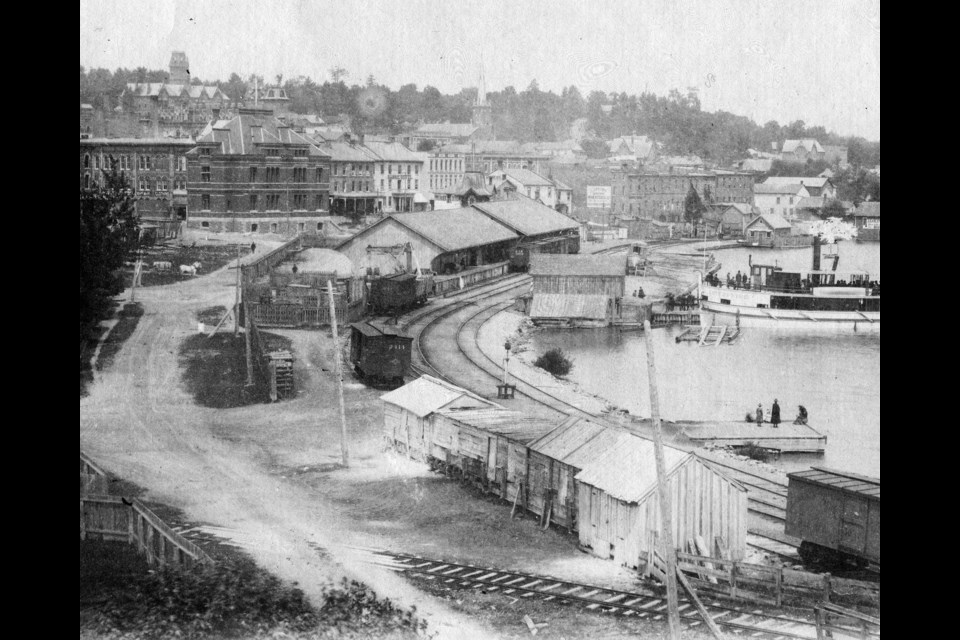Barrie’s rich past is varied and ready to be explored thanks to the Simcoe County Archives.
With the interest and generosity of residents, and people from across the county, the Midhurst-based facility is a treasure trove of documents that reveal how people have lived over the last 150 years (give or take), according to county archivist Matthew Fells.
Approximately 2,000 folks take advantage of what the archives can offer, at no charge, he says.
“The three most common enquiries are about genealogy and family history, local history and property research,” Fells says.
“People can get into genealogy for a variety of reasons,” he adds. “They might find an old family bible and might see some names in there and want to know more. Or they hear stories from their family, or an oral history of their family that’s told internally and then they become interested in learning more.”
The archives also has a subscription to the ancestry service which people can use.
“We have newspapers from all over the county going back to approximately the 1850s where people can find birth, death and marriage notices,” Fells says.
The archives, which opened in 1966 as part of the county’s centennial project for Canada’s 100th anniversary in 1967, has a double mandate, he says.
“We collect the permanent corporate records of the County of Simcoe as well as all the lower-tier municipalities and the City of Barrie. Those are available to the public for consultation,” the archivist says.
“We have a second mandate which is to collect widely on the history of the county. It could be any kind of documentary heritage: textual records, photographs, moving images, maps, plans,” Fells adds. “We collect as widely as we can in order to paint a picture of the county. It could be photos, letters, journals and diaries, but often it will be something they do in a professional or volunteer capacity.”
The archives does not solicit records.
“We take donations from private individuals, organizations and businesses. We rely on people bringing us those records and they are eager to do that for a lot reasons,” Fells says. “Hopefully the main one is to preserve, and to ensure, the ongoing preservation of these historical documents.
"In other cases, people want the space back in their own homes. Records can take up a lot of space.”
Which is one of the reasons the Simcoe County Archives, which was originally located in the museum next door, has seen so much growth.
In 1979, it opened in a 4,000-square-foot at its current location. In 1992, another 4,000 square feet was added and 2012 additional 12,000 square feet was tagged on.
The technology of preserving documents has changed over the years, Fells says.
“In the early days we had card catalogues that were all typed out on typewriters,” he says. “The first computer we got was in the early ‘90s and we got our first database in 1996, but we still have the old ways of accessing information.
“My challenge over the next few years will be to get the old things (from before 1996) into the database so that it’s all searchable in one place, in one way,” he adds.
Another technology that has changed things for the archives is the internet.
“It changed people's expectations about how information is found; you go to Google or Wikipedia and a little thing pops up. Sometimes people come in here, type in their address and (hope) there will be a file on their house. But that’s not how archival research works.
“I think they are disappointed because of the expectation Google has set when they come to the archives and have to do a bit more digging,” Fells says. “You have to dig through a variety of sources. We can point people in the right direction but they have to actually look through the records.”
And these days, more recent records are being “born” digitally, so there are no hard copies, he adds.
“That raises significant issues about preservation. We can take a piece of paper and put it on a shelf. If we can control temperature and humidity fluctuations to within certain parameters, it will last for a couple of centuries.
“Whereas with an electronic record, maybe the software that creates it has becomes obsolete or migrates to a new version that no longer supports the old file formats,” Fells says. “What do you do with the old one? You have to migrate it; you have to monitor what formats you have; you have to bring it forward. And every time you bring it forward, there’s a chance you lose information because you’re reformatting it. So that’s problematic.”
The facility is currently in the midst of building efficiency upgrades thanks in much part to grant funding from the Federation of Canadian Municipalities to the tune of almost $600,000, with the county paying for the remaining portion of the project.
The goal of the two-year project, with a total cost of approximately $900,000, is to improve the energy efficiency of the archives building and reduce greenhouse gas emissions.
There continues to be a steady amount of interest in preserving the past, Fells says.
“I think people grow into it; they reach a certain age in their life and start looking back or they came across something in their family that intrigues them. We’re interested in material that is reasonably well organized and labeled. If someone is interested in donating they should identify people in a photo and provide some context for it.



